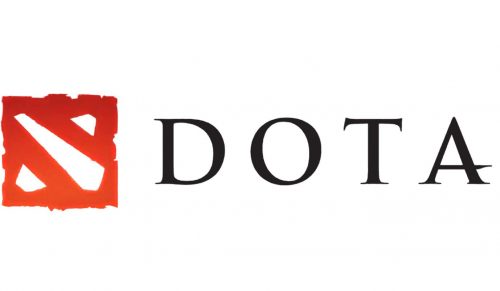The series of strategy video games Dota was developed by Valve Corporation, a video game developer, publisher, and digital distribution company based in the US.
Meaning and history
The origins of the series can be traced back to 2003, when Defense of the Ancients appeared, which was a fan-developed MOBA for Warcraft III.
2003 – now (Defense of the Ancients)
If you compare the DOTA logo with that of its predecessor, you will see they barely have anything in common.
To begin with, the logo of Defense of the Ancients doesn’t carry an emblem of some sort. The wordmark itself, however, looks pretty picturesque, with its multiple decorative elements. They do resemble a kind of ancient script (maybe Gothic), and yet, it is in no way a replica but a totally independent artwork.
2013 – now (Dota)
When Valve introduced Dota 2, a new page started in the history of the brand itself, and of course, its visual identity.
A stylish red and white emblem appeared, which was inspired by the design of the game. The emblem imitates a Dota map, where the elongated element in the central position represents the river. The trapezoid at the top right corner represents a Scorch/Dire base, while the shape at the lower-left corner appears to be the Radiant/Sentinel base.
The shapes are white and are placed inside a red square. The edges of the “map” are ragged, which apparently is supposed to conjure up the images of ancient maps.
Font
You can tell at a glance that the type has been customized. While the overall look isn’t that unique, the stretched horizontal bar of the “A” and the serif on its lower right end help the type to stand out.
On the whole, the glyphs appear refined due to the elegant serifs and the artistic combination of thicker and thinner strokes.
Colors
While red is a bright and eye-catching color, in the DOTA logo, it has a different quality – it looks nobler, muted, and has a pronounced aged effect. The gray of the wordmark doesn’t steal the limelight.










